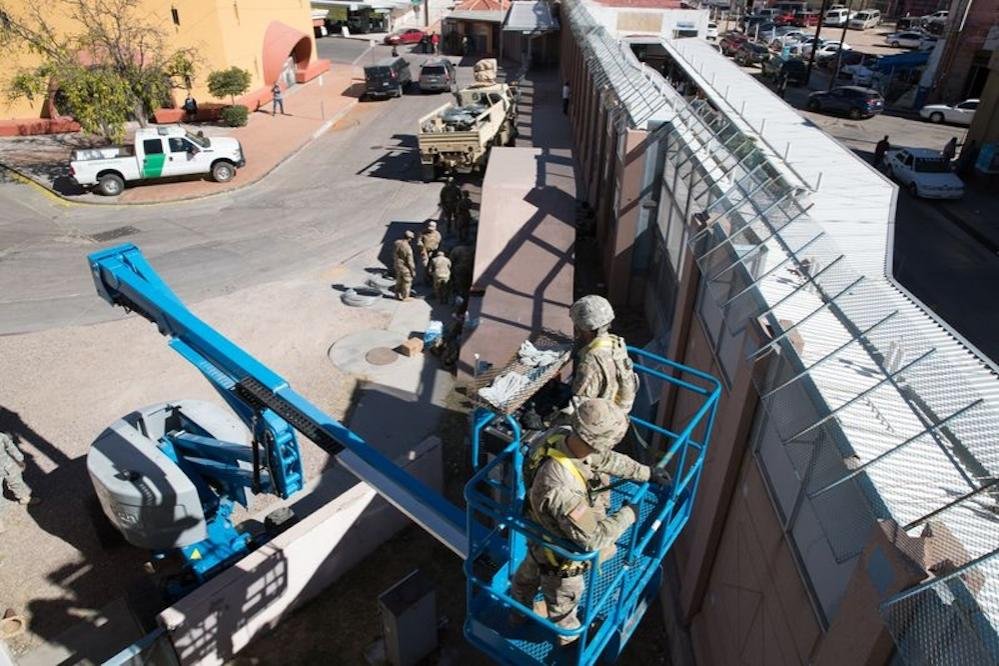border
Biden’s Border Freeze and Mexico’s Measures Leave Asylum Seekers in Limbo

In Mexico City, many asylum seekers from South America are utilizing pay-by-the-week rooming houses and outdoor encampments as interim shelters en route to the U.S. This situation arises nearly a month after President Joe Biden’s executive order restricting border entries and lengthening asylum appointment wait times.
Mexico City has become a key hub due in part to the tracking feature of the U.S. Customs and Border Protection’s CBP One app. This app makes Mexico City the southernmost point where it can be accessed, drawing many migrants.
On June 4, Biden signed an executive order enabling the temporary shutdown of asylum processing at the world’s largest migration corridor. The revised Immigration and Nationality Act now allows expedited removal processes and restricts asylum options for unauthorized immigrants.
For the past five months, Ramon Daniel Vargas Vargas has resided in Casa Verde, a rooming house in Mexico City’s Santa Maria la Ribera neighborhood, paying $100 a month for a small room. He is struggling to make a daily asylum appointment via the CBP One app.
Stands selling arepas, a traditional Venezuelan and Colombian dish, have appeared near Casa Verde, providing migrants with familiar food. Vargas said Venezuelans predominantly occupy the house and described the living conditions as harsh.
Further along in their journey, Jean Carlos and his family lived for two months in a La Merced neighborhood encampment in Mexico City. They now reside in a shelter in San Luis Potosi, which has its own set of challenges.
“This place is like a prison,” Carlos explained, noting the shelter’s phone curfew that disrupts their attempts to make CBP One appointments.
Biden’s border policy will remain in effect until the number of detained migrants drops below specific thresholds for consecutive weeks. Immigrant rights groups have filed lawsuits against the administration, citing the 1980 Refugee Act, which aims to provide humanitarian asylum processes.
While prior appointments through CBP One continue, critics argue that reliance on the app reduces accessibility and narrows the already limited asylum window. Elora Mukherjee, Director of the Immigrants’ Rights Clinic at Columbia Law School, stressed the difficulty asylum seekers face under new time constraints.
Dora Rodriguez, founder of Casa de la Esperanza in Sasabe, Sonora, noted the stark changes following the executive order. Her center aids recently deported individuals, highlighting the harsh conditions they face upon return to remote, resource-scarce areas.
The Mexican government has yet to issue a formal border policy response. However, on June 5, National Guard and National Institute of Migration agents forcibly relocated 400 migrants from Giordano Bruno Plaza in Mexico City to unverified destinations.
Guillermo Yrizar Barbosa, an immigration researcher, commented on the disorienting tactics used by Mexican authorities, likening it to a “game of chutes and ladders.”
From January to April 2024, Mexico National Institute of Migration arrested 223,978 individuals in Tabasco. Suspicion remains high regarding the accuracy of these figures.
In a recent press conference, Nuria Fernández of the National System for Family Integral Development reported that more than 48,111 children have received aid this year. Most of these services are provided in the southeast and northeast regions of Mexico. The children primarily originate from Venezuela, Honduras, Ecuador, and several other Latin American countries.


















